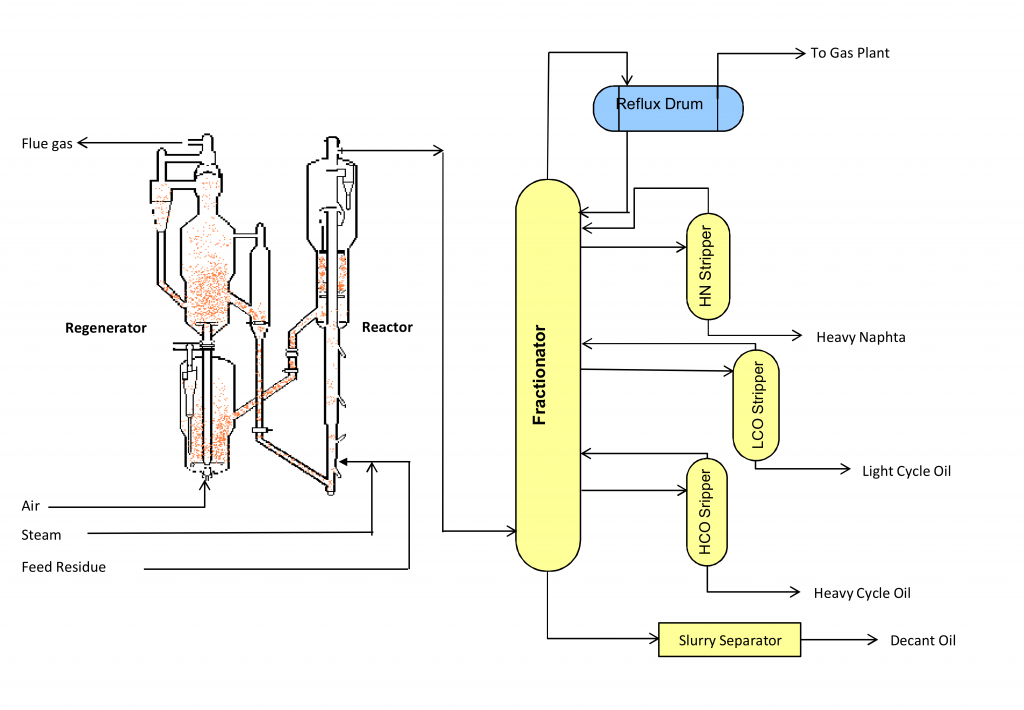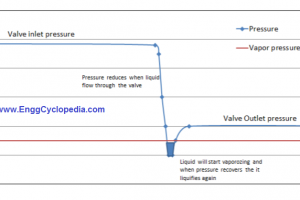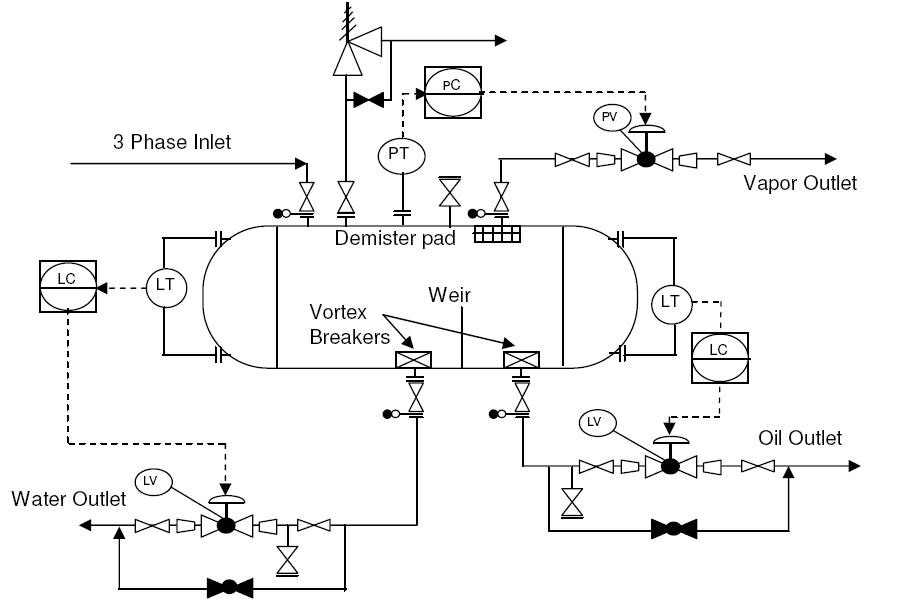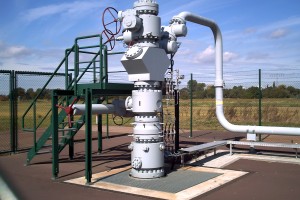
The main purpose of the Residue Catalytic Cracking process is to convert various reduced crudes to lower boiling, high value products, primarily C3-C4 LPG, gasoline, and light cycle oil.
Fluidized Catalytic Cracking (FCC)
Using vapor phase chemical reactions in the presence of specialized FCC (Fluidized Catalytic Cracking) cracking catalyst, the long molecular chain FCC feedstock is cracked to shorter chain molecules. Heat for the cracking process is supplied by the hot regenerated catalyst which vaporizes the finely atomized oil feed and sets the stage for a rapid but selective cracking process. Fuel gas, slurry oil, and coke are also generated in the “reactor-riser” as by-products of the reaction. Majority of the FCC equipment handles catalyst / vapor product separation and removal of the coke from the catalyst, while only a small portion of the system is directly used for the cracking reaction.
The Residue Fluid Catalytic Cracking Process (RFCC) of IFP (French Institute of Petroleum) incorporates two-stage catalyst regeneration, a feed injection system, mixed temperature control, a riser termination system, and air/steam distribution devices.
The reaction-regeneration section consists of feed injection system, riser, riser outlet separator system, disengager/stripper, two- stage regenerator, catalyst withdrawal well, catalyst transfer lines and control systems. The feed mixture is pumped to the base of the riser and divided into equal flows, to each of the feed nozzles. The feed, which has been preheated, is finely atomized and mixed with dispersion steam in the feed nozzles and injected into the riser. The small droplets of feed contact hot regenerated catalyst in a counter current way and vaporize immediately. The vaporized oil intimately mixes with the catalyst particles and cracks into lighter, more valuable products along with slurry oil, coke and gas. The product vapors travel up the riser while carrying the catalyst.
The coke formed in the catalyst by the reaction is burned in two stage of Regenerator. The heat of combustion released by the combustion of coke is transferred to the catalyst which will later supply the heat required to the reactor. The combustion air required is supplied by an air blower. The air heaters are used during start-up to heat-up the equipment.
The fractionation section fractionates the vapor product from the Reaction section. The products from this section are Clarified Oil, Light Cycle Oil and Heavy Naphtha.
The fractionator overhead vapor and liquid streams are further processed in the Gas Recovery section (Gas Plant). The products from this section are Light gasoline, Fuel gas and LPG.




